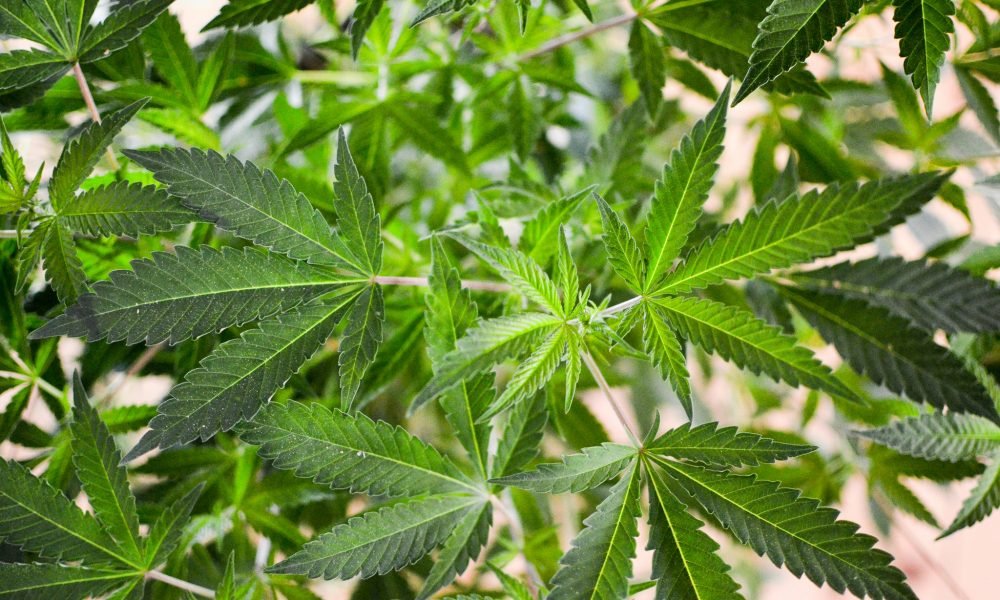According to a recent study, legalizing medical marijuana appears to reduce monetary payments made by opioid manufacturers to pain specialists. The authors found “evidence” that the decrease was due to the availability of medical cannabis as an alternative to prescription painkillers.
Find MML [medical marijuana legalization] “This leads opioid manufacturers decrease direct payments to doctors prescribing opioids,” wrote the authors from the University of Florida and State University of New York at Buffalo. “Our analysis suggests this shift is a result of increased adoption for marijuana to manage pain, which indicates that opioid manufactures perceive marijuana as superior and respond by decreasing these payments.”
The study, which was published in the Journal of the American Statistical Association late last year, was partly funded by a grant provided by the National Science Foundation. It looked at various financial incentives that opioid drugmakers provide to prescribing doctors—such as consulting fees and travel to conferences—and used a novel method of analysis meant to estimate causal effects from observational data.
The report states that “our analysis shows a significant reduction in direct payments made by opioid manufacturers to physicians who prescribe pain medications as a result of MML’s passage.”
The new study was co-authored by Wreetabrata Kara, assistant professor of Marketing at the SUNY Buffalo School of Management.
In a press statement, the researcher said that “our findings indicate that medical cannabis is increasingly viewed by many as an alternative to opioids for chronic pain treatment.” This could help transform pain management and reduce the opioid epidemic that has affected communities all across the U.S. “The availability and affordability of new pain management methods can affect the financial dynamic between drug companies, health care providers, and pharmaceutical companies.”
The team’s analyses found that the decrease in direct payments to physicians from opioid manufacturers was greater among doctors “practicing in areas with higher white population, lower affluence and a higher proportion of working-age resident.”
Kar explained that “lower income regions have a higher rate of chronic pain, and also opioid abuse. This makes them key areas to consider for possible substitutions with medical marijuana.” “Black patients also tend to be less likely to receive opioids as pain medication, and younger populations are more open to alternative treatment, which may explain the differences in marijuana legalization’s impact on these communities.”
The study stresses that, while it focuses on the relationship between opioid producers and doctors, “it is crucial to consider how MML impacts patient pain management,” pointing out that prescription data annually shows a decline in opioid prescriptions for states that have legalized medical marijuana.
The paper states that from 2015 to 2017 in the states without an MML, the 30 days’ supply of opioids versus non-opioids remained the same. In the states that passed an MML between 2015 and 2017, the ratio of 30 days’ opioid prescriptions to non-opioids as well the days prescribed decreased, going from 1.57 to 1.52 to 1.57. “In particular, opioid versus nonopioid prescribing patterns did not change from control states to MML states between 2015 and 2017.
Separate research released late last year showed that opioid fatal overdoses declined in jurisdictions which legalized marijuana to adults. In this study, a “consistently adverse relationship” was found between the legalization of marijuana and fatal overdoses. States that legalized cannabis prior to the opioid epidemic saw a greater impact. The authors estimated that legalizing recreational marijuana “is associated with an approximate 3.5 death reduction per 100,000 people.”
This report stated that “our findings suggest that broader access to recreational marijuana could help combat the opioid epidemic.” “Previous studies have shown that marijuana (mainly for medical use), can reduce opioid prescriptions. Our findings suggest it may also reduce overdose death.”
“Further this effect increases with earlier Implementation of [recreational marijuana legalization]This relationship is fairly consistent over time,” the report added.
A report published recently on prescription opioids in Utah after the legalization of medical cannabis found that legal cannabis reduced the use of opioids by chronic pain patients and also helped reduce prescription overdoses statewide. The study concluded that cannabis has a significant role to play in the management of pain and reduction of opioid usage.
A study from 2023 found that medical marijuana usage was associated with reduced pain and reduced dependency on opioids. Another study, published in February by the American Medical Association, showed that chronic pain sufferers who used medical marijuana for more than a week saw a significant decrease in opioid prescriptions.
About one in three chronic pain patients reported using cannabis as a treatment option, according to a 2023 AMA-published report. The majority of this group reported using cannabis to replace other pain medications including opioids.
According to other research published the same year, CBD legalization led to opioid prescription rates dropping by 6.6 percent to 8.1%.
A 2022 research paper that analyzed Medicaid data on prescription drugs, meanwhile, found that legalizing marijuana for adult use was associated with “significant reductions” in the use of prescription drugs for the treatment of multiple conditions.
A 2023 report linked state-level medical marijuana legalization to reduced opioid payouts to doctors—another datapoint suggesting that patients use cannabis as an alternative to prescription drugs when given legal access.
Researchers published a study last year that examined opioid prescriptions and mortality rates in Oregon. The researchers found that the availability of retail marijuana in close proximity to Oregon moderately decreased opioid prescriptions. However, they observed no drop in opioid related deaths.
Cannabis may also be an effective alternative to opioids when it comes to pain management, according to other recent studies.
A report published recently in the journal BMJ Open, for instance, compared medical marijuana and opioids for chronic non-cancer pain and found that cannabis “may be similarly effective and result in fewer discontinuations than opioids,” potentially offering comparable relief with a lower likelihood of adverse effects.
According to a separate research, more than half of chronic pain patients said that cannabis was better than analgesic medications. Forty percent of those who used marijuana reported reduced use of painkillers.
A report released late last year looked at the effects of including medical marijuana in state prescription drug monitoring program. It concluded that the added tracking had mixed results, reducing both the prescription of drugs that could cause complications when combined with cannabis, and exposing possible bias among healthcare providers against medical marijuana patients.
Federally-funded study shows that marijuana use by young adults is three times higher than alcohol consumption on a near-daily basis.
Philip Steffan is the photographer.




